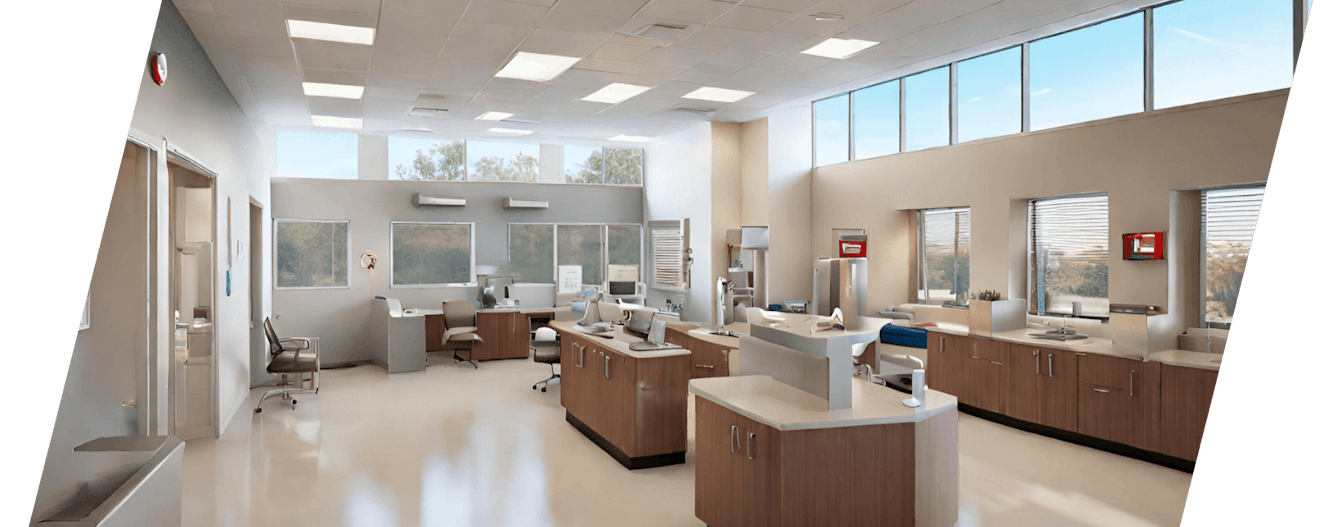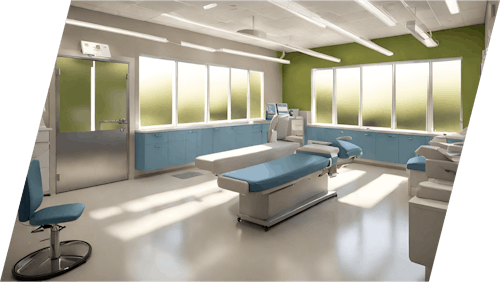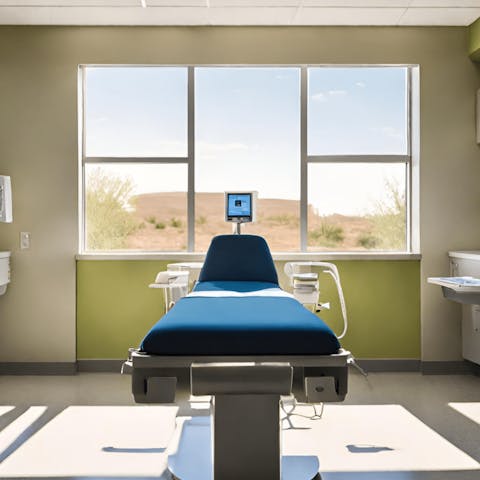









Urgent Care Facilities
Wiring a New Urgent Care Medical Facility: Considerations and Process
Wiring a new urgent care medical facility is a complex task that requires meticulous planning, adherence to stringent codes, and a deep understanding of the unique electrical needs of healthcare environments. This blog post will explore the essential considerations and steps a professional commercial electrician must take to ensure a safe, reliable, and compliant electrical system for an urgent care facility.
Special Certification
Working on the electrical systems of healthcare facilities often requires special certifications. One such certification is the Certified Health Care Facility Manager (CHFM) credential, which demonstrates expertise in compliance, planning, design, construction, maintenance, and operations within healthcare settings. Additionally, electricians may need to be familiar with the National Fire Protection Association (NFPA) standards, particularly NFPA 99, which covers healthcare facilities.
GALLERY
Conclusion
Wiring a new urgent care medical facility is a complex and critical task that requires careful planning, adherence to stringent codes, and a deep understanding of the unique electrical needs of healthcare environments. By following the outlined considerations and steps, a professional commercial electrician can ensure a safe, reliable, and compliant electrical system that supports the facility's operations and enhances patient care. Regular maintenance and adherence to safety standards are essential to maintaining the integrity and functionality of the electrical system over time.
Installation Process
Planning and Design
The first step in wiring a new urgent care facility is thorough planning and design. This involves:
Assessing Electrical Needs: Determining the power requirements for different areas and equipment within the facility.
Compliance with Codes: Ensuring the design meets all relevant codes and standards, including the National Electrical Code (NEC) and NFPA guidelines.
Developing an Electrical Plan: Creating detailed plans that outline the placement and capacity of circuits, outlets, switches, and lighting fixtures.
Circuit Design
The electrical plan should specify the design of each circuit, including the number and location of outlets, switches, and lighting fixtures. This ensures that the facility's electrical system can handle the expected loads and provides flexibility for future expansions or modifications.
Wiring Installation
The actual installation of wiring involves several key steps:
Installing Conduits and Raceways: Electricians install conduits and raceways to protect and route the wiring. This includes both surface and concealed conduit wiring, depending on the facility's design and aesthetic requirements.
Running Cables: Electrical cables are run through the conduits, ensuring proper support and separation from other utility lines. The cables must be appropriately rated for the expected loads and environmental conditions.
Connecting to Electrical Panels: The wiring is connected to electrical panels, with each circuit properly labeled and protected by circuit breakers or fuses. This ensures that any issues can be quickly identified and addressed.
Outlet and Switch Installation
Electricians install outlets, switches, and other devices according to the electrical plan. This includes ensuring proper grounding and adherence to safety standards, such as using hospital-grade receptacles in patient care areas.
Testing and Inspection
Once the wiring is installed, a comprehensive testing and inspection process is conducted to verify the proper functioning and safety of the electrical system. This includes checks for voltage, grounding, and continuity, as well as ensuring compliance with all relevant codes and standards.
Maintenance and Troubleshooting
Regular maintenance is essential to ensure the longevity and reliability of the electrical system in an urgent care facility. This includes:
Scheduled Inspections: Periodic inspections by licensed electricians to identify potential issues, such as loose connections, worn-out components, or overloaded circuits.
Upgrading Electrical Panels: As the facility's electrical demands grow, upgrading electrical panels to accommodate additional circuits and prevent overloading.
Replacing Outdated Wiring: Over time, wiring can deteriorate, leading to increased resistance, heat buildup, and potential fire hazards. Timely replacement of outdated wiring is crucial.
Proper Equipment Use: Training staff to use electrical equipment safely and responsibly, and encouraging them to report any malfunctions or abnormalities.
Prompt Repairs: Addressing any signs of electrical problems, such as flickering lights, burning odors, or tripped breakers, promptly by contacting a professional electrician.
Safety Considerations
Safety is paramount in the electrical wiring of healthcare facilities. Key safety considerations include:
Compliance with Codes: Ensuring that the electrical system adheres to local electrical codes and regulations. Consulting with a professional electrician to ensure compliance is essential.
Ground Fault Circuit Interrupters (GFCIs): Installing GFCIs in areas where water is present to protect against electrical shocks.
Surge Protection: Protecting sensitive electronic equipment from power surges by installing surge protection devices.
Fire Safety: Implementing fire safety measures such as smoke detectors, fire alarms, and fire extinguishers to minimize the risk of electrical fires.
Employee Training: Educating employees about electrical safety, including proper handling of equipment, avoiding overloading circuits, and recognizing potential hazards.
Unique Requirements of Urgent Care and Hospital Wiring
Essential Electrical Systems
Healthcare facilities, including urgent care centers, have unique electrical requirements due to the critical nature of the services they provide. The electrical systems must be designed to ensure continuous operation, even during power outages. This is achieved through essential electrical systems (EES), which are divided into three branches: life safety, critical, and equipment.
Life Safety Branch: Supplies power to systems essential for the safety of patients and staff, such as emergency lighting, fire alarms, and exit signs.
Critical Branch: Powers critical medical equipment and systems that are vital for patient care, such as ventilators and monitoring devices.
Equipment Branch: Provides power to other essential equipment that supports the facility's operation, such as HVAC systems and sterilization equipment.
Each branch must have its own transfer switches to ensure reliability and proper load management.
Wiring and Separation
The wiring for the life safety and critical branches must be kept independent of all other wiring to prevent any interference or failure from affecting these critical systems. This involves using separate conduits, raceways, and enclosures, and ensuring that these components are clearly marked and identified as part of the EES.






